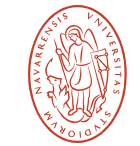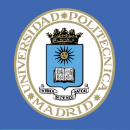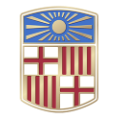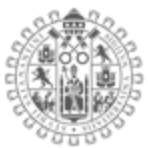Polytechnic University of Catalonia, the following is a detailed introduction to it:
Introduction and Overview
Geographical location: Located in the autonomous region of Catalonia, Spain, most of the campuses are in the capital Barcelona, and there are also campuses in Tarragona, Reus, Castellón de la Plana, Tral, Alcudia and other places.
Student size: There are more than 30,000 students, of which about 30% of master's students are foreign students, and about 40% of doctoral students are foreign students.
History and establishment time
The history of the school can be traced back to the Barcelona Higher School of Engineering established in the mid-19th century. In 1971, the Barcelona Higher School of Engineering, Barcelona Higher School of Architecture and Terrassa Higher School of Engineering merged to form the Barcelona Polytechnic University.
In 1984, because the campus is distributed throughout the Catalonia region, it was officially renamed the Polytechnic University of Catalonia.
School strength
Teaching quality: As one of the most famous engineering universities in Spain, it offers 70 undergraduate majors, 73 master's majors and 48 doctoral programs, including 5 undergraduate programs and 29 master programs taught in English, covering many cutting-edge fields such as artificial intelligence, computer vision, big data management and analysis, drone system applications and technology, water informatics and water resources management.
Faculty: more than 3,000 teaching and research personnel.
Research strength: 273 research teams, more than 6,000 research projects in the research stage. In the 2018 CTWS Leiden University Ranking, the number of academic papers published in the fields of computer and mathematics ranked first in Europe. It is the university with the most papers published in the fields of mathematics, computer science, information technology and engineering among all Spanish universities. It is also the university with the most scientific research and development projects approved by the Industrial Technology Development Center under the Spanish Ministry of Science, Technology and Innovation and the most patent applications.
Institutional nature
Public university.
Educational philosophy
Committed to cultivating and expanding students' abilities, insights and plasticity, creating international talents with innovative and research spirit and interdisciplinary capabilities, with the goal of becoming a pioneer leader in the integration of education, innovation and scientific research in southern Europe, based on the "European Higher Education Area" The school provides students with the best and most comprehensive education and training, and provides them with sufficient career reserves for entering emerging science and technology fields.
Key laboratories and disciplines
Key disciplines: According to the world university discipline rankings such as QS and ARWU, the school ranks among the top 50 in the world in instrument science and technology, remote sensing technology, architecture, communication engineering, computer science, power electronics engineering, civil engineering, water resources science and other disciplines. Among them, in the 2022 QS World University Subject Rankings, architecture ranked 19th, civil and structural engineering ranked 29th, electrical and electronic engineering ranked 52nd, computer science and information systems ranked 86th, etc.
Key laboratories: The school has a number of high-level specialized research centers and regional technology centers, with a research scope of more than 250 fields. These centers cater to the needs of different fields of society and various special industries.
Department settings
Currently, it consists of 9 campuses and 23 departments, including 273 scientific research teams and multiple school-level research centers.
Ranking
2023 QS World University Rankings: 343rd.
2021 QS World University Subject Rankings: Engineering ranked 67th in the world and 1st in Spain.
2020 QS Graduate Employment Competitiveness Ranking: 111-120th.
2021 U.S.News World University Rankings: Engineering ranked 103rd in the world and 1st in Spain. 2019-2020 URAP World University Academic Ranking: Engineering ranked 69th in the world and 1st in Spain.
Expenses
Tuition fees: Undergraduate studies at Spanish public universities are generally free of charge. Only a small registration fee of about 1,000-2,000 euros per year is required. Tuition fees for master's and doctoral degrees vary depending on the major. Master's tuition fees are about 2,000-5,000 euros per year.
Living expenses: The cost of living in Barcelona is relatively high, including accommodation, food, transportation, etc., which costs about 800-1,200 euros per month.
Campus Environment
Campus Distribution: 9 campuses are located in the city of Barcelona and surrounding towns such as Castelldefels, Manresa, Sant Cugat del Vallès, Terrassa, Ibarra Nova i La Geltrú, etc. These campuses have convenient transportation and complete supporting facilities. They are a combination of teaching, research and life, providing teachers and students with a convenient and high-quality teaching and scientific research environment.
Facilities and Atmosphere: The school provides a variety of services to meet the needs of students and other school personnel, including a library with nearly 3,000 seats, a language and professional language service center, foreign language and Catalan training courses for foreign students, a career guidance office, a student guidance center, etc. There are also university apartments and service facilities in the commercial district, such as optical shops, bookstores, banks and restaurants.
-

University of Navarra
-

Autonomous University of Madrid
-

Polytechnic University of Catalonia
-

CEU University of San Pablo
-

Technical University of Madrid
-

University of Lleida
-

University of Barcelona
-

University of Oviedo
-

University of Salamanca
-

University of Valladolid
-

Mesoamerican University
-

Istmo University
-

Mariano Galvez University of Guatemala
-

Regional University of Guatemala
-

Galileo University
-

Francisco Marroquín University
-

Rafael Landívar University
-

University of the Valley of Guatemala
-

University of San Carlos of Guatemala
-

Technological Institute of Tlaxcala Plateau
-

Golfo University
-

Technological University of South Sonora
-

Technological University of Huejotzingo
-

Tizimín Institute of Technology
-

Chilpancingo Institute of Technology
